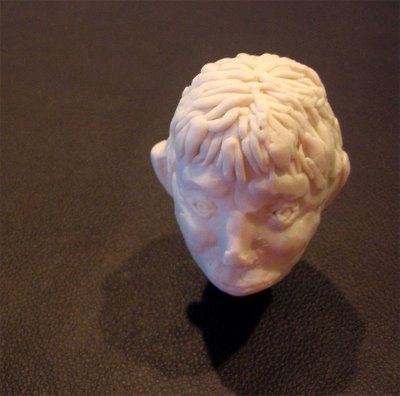Alma 36 - Chiasmus

Today our focus was on Alma 36.
EYE OPENER:
To begin, and to intrigue the class, I showed them the sculpture my fifth-grade daughter and I did one day for our homeschool art activity. The kids were amazed that my little daughter was able to create this. I explained that when instructions are clear and step-by-step, we can accomplish almost anything.
ACTIVITY:
Then we played a game of sorts. I passed out a plain piece of paper and had them write their names on it (when I do this, the students all seem to participate...because I remind them that grades are given at the end of the year based on participation [grin]).
Once each student had their paper personally "monogrammed", they were to close their eyes. At that point, I gave them a series of paper folding instructions. They could not ask questions of any kind, nor could they open their eyes. Some of the final instructions were to tear off the upper right corner of their (now)
 smally-folded paper.Then they were to tear off the lower left corner. At that point, I instructed them to smooth open their creations and finally open their eyes.
smally-folded paper.Then they were to tear off the lower left corner. At that point, I instructed them to smooth open their creations and finally open their eyes.Of course, there was a wide variety of paper art. I asked why. They gave a variety of answers (...our eyes were closed, we couldn't ask questions for additional clarifications, etc.). I then asked for volunteers to read the following series of suggested scriptures (included in the teacher's manual for Alma 36 on page 174):
* Moses 5:12
* D&C 68:25
* D&C 93:40-49
* Mosiah 4:14
APPLICATION:
We talked about what all these scriptures had in common. They were quick and stated that parents were to teach righteousness to their children. Applying this, I asked them if they liked everything their parents told them to do in righteousness. In fact, how did they feel when their parents told them "No" for something they wanted to do? We discussed how there is condemnation on the head of parents who do not hearken to the Lord and His counsel.
At this point, I threw out a question. "How soon is marriage for you?" The answers of course ranged, but the point was that in less than a decade, most likely they would all be parents and this condemnation will fall on them if they do not teach and live righteous lifestyles.
SCRIPTURE BLOCK INTRO:
We then discussed how the next series of chapters (Alma 36-42) were all about a parent teaching his children of righteousness. We talked about how when the Lord gives instructions, they are clear and concise, all leading to the same result -NOT like how I'd led the paper art exercise! And why is He so careful and clear in His instructions? Because He wants us all to arrive at the same result after this life - eternal life.
ACTIVITY:
Then I gave the kids an assignment: to complete a four line poem. They were to write it on their paper art (I do this so I can keep track of who is participating or not - the paper art already had their name on it). I gave them the first line:
"Roses are red..."
APPLICATION:
Their assignment was to complete the poem. Once finished, they shared a variety of fun poems. We then talked about how poems are a form of literature and that Alma used an ancient and complex form of literature to share a very important concept with his son: that of Jesus Christ and his payment for our sins.

Briefly I explained the historical importance of chiasmus as a memory tool. Then we looked at several verses suggested in the teacher's manual (Isa. 55:8 and Matt. 10:39) as examples of how common this literature tool was anciently. Yet chiasmus was not commonly used in the United States in the 1800's. But there it is in the Book of Mormon!! Amazing, since it comes from an ancient time period (approximately 600 B.C. to 421 A.D.), running parallel with so many Old and New Testament scriptures.
SCRIPTURE BLOCK Alma 36:
I created the form suggested in the teacher's manual on page 175, enlarging each section so they could summarize the verses and compare and contrast what they learned.

Instead of having them do this individually, I had them each take responsibility for one line, with both chiastic verses (see lesson manual for further instructions. You can also click on the picture to enlarge it in a new screen.).
Then they shared as a class what they found so they could all fill in the chart (there's just not enough time sometimes to do everything individually!)
Their eyes were big as they were learning this beautiful form and literary device. We discussed in closing that the most important point the author (in this case, the prophet) makes will always be found in the middle of the chiastic form. And what was Alma's most important point to his son? That the Son of God was coming to atone for the sins of the world!
As Elder Holland taught in his 1985 book, However Long and Hard the Road, "Christ is the power behind all repentance." Now that is something worthy of the most beautiful of literary forms. What a privilege to teach this today.
******
For free PDFs and to join the free newsletter list, simply visit here to join.
Until next week,
just another early-morning-seminary-teacher mom! :0)
__________
Resource for paper folding activity: 100 Training Games, by Gary Kroehnert
